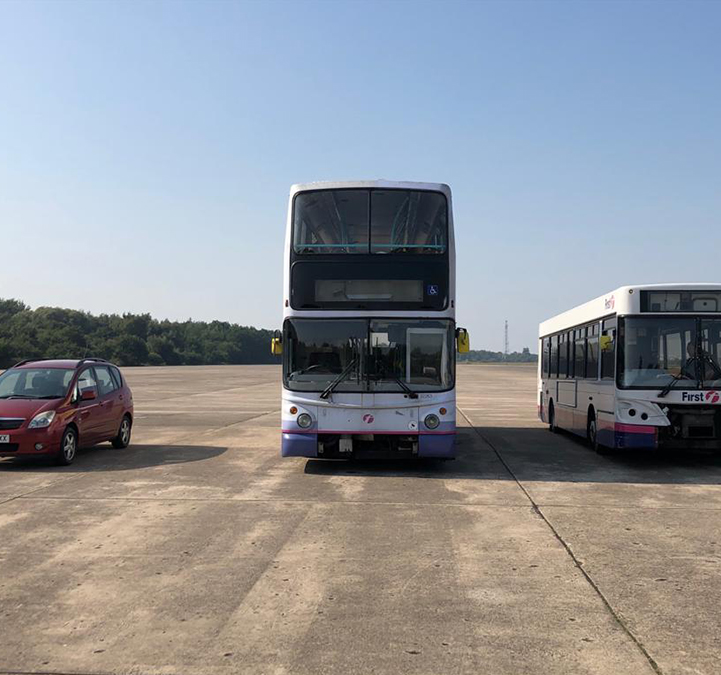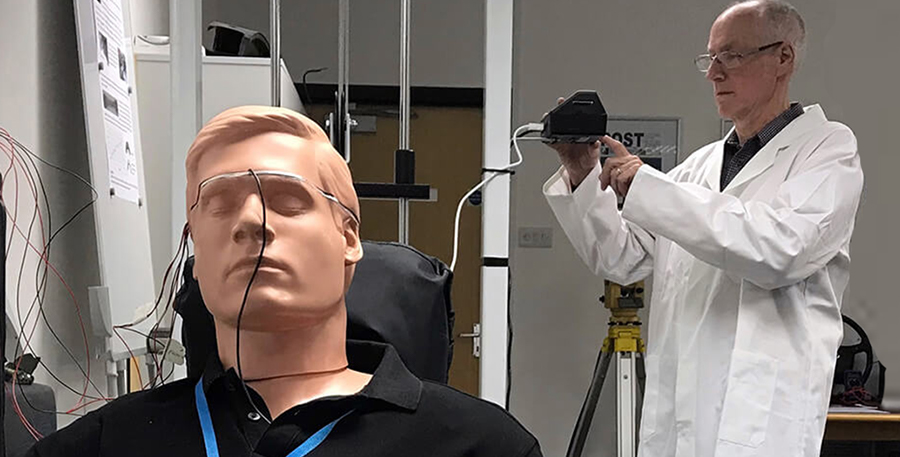A cold, rainy & exciting day of bus crash testing
26th October 2020

Every year there are approximately 5,000 road collision accidents reported in the UK where buses or coaches are involved. When these accidents happen, our market leading team of forensic scientists, engineers and collision investigators are often instructed to offer impartial and expert advice on the mechanics of the collision.
To gather evidence, test theories and add weight to our expert opinions, we regularly carry out crash testing. We have long wanted to carry out crash testing with buses. In recent years, we have developed a very close working relationship with transport provider FirstGroup, who kindly agreed to donate end-of-life buses that we could use in our crash testing.
We worked closely with FirstGroup on a plan and to decide what type of tests would be the best to help in producing our evidence in the future. We looked at various collision scenarios that busses may be involved in on a day-to-day basis, and based tests around this to see what damage would be done to the bus and what effect the collision would have on the bus passengers.
The testing took place at Elvington airfield near to York. For those of you that are fans of Top Gear, Elvington regularly appears on the show as they test vehicles. During the day of testing, we researched multiple bus-related accident scenarios using accelerometers, event data recorders, CCTV and telemetry. We used this technology to monitor and record the movement of the people inside the vehicles. Recording those movements enables us to provide evidence following similar real-life accidents going forward.
We’re currently in the process of analysing the data we gathered on the day. Ultimately, the plan is to produce a research paper to be peer-reviewed and published in appropriate scientific journals. All of this adds to the expert opinions that our team of forensic scientists can offer and adds strength to the evidence that we provide to our instructors.
Related Articles
-
- Article
- Claims Solutions
4 reasons why we saw an increase in fire claims
We have seen a mix in peril change and an increase…
-
- Acquisition
- Article
- Claims Solutions
Acquisition announcement: Davies adds to its specialist motor claims capability with acquisition of GBB Holdings
Davies today announces the acquisition of GBB Holdings incorporating specialist forensic…
-
- Article
- Claims Solutions
- Technology
Motor Claims invest in Event Data Recorder technology
We have been at the forefront of utilisation and development of…
-
- Article
- Claims Solutions
Claims volume and type changing through COVID-19 pandemic.
New claims trends are starting to take shape, as we begin…



